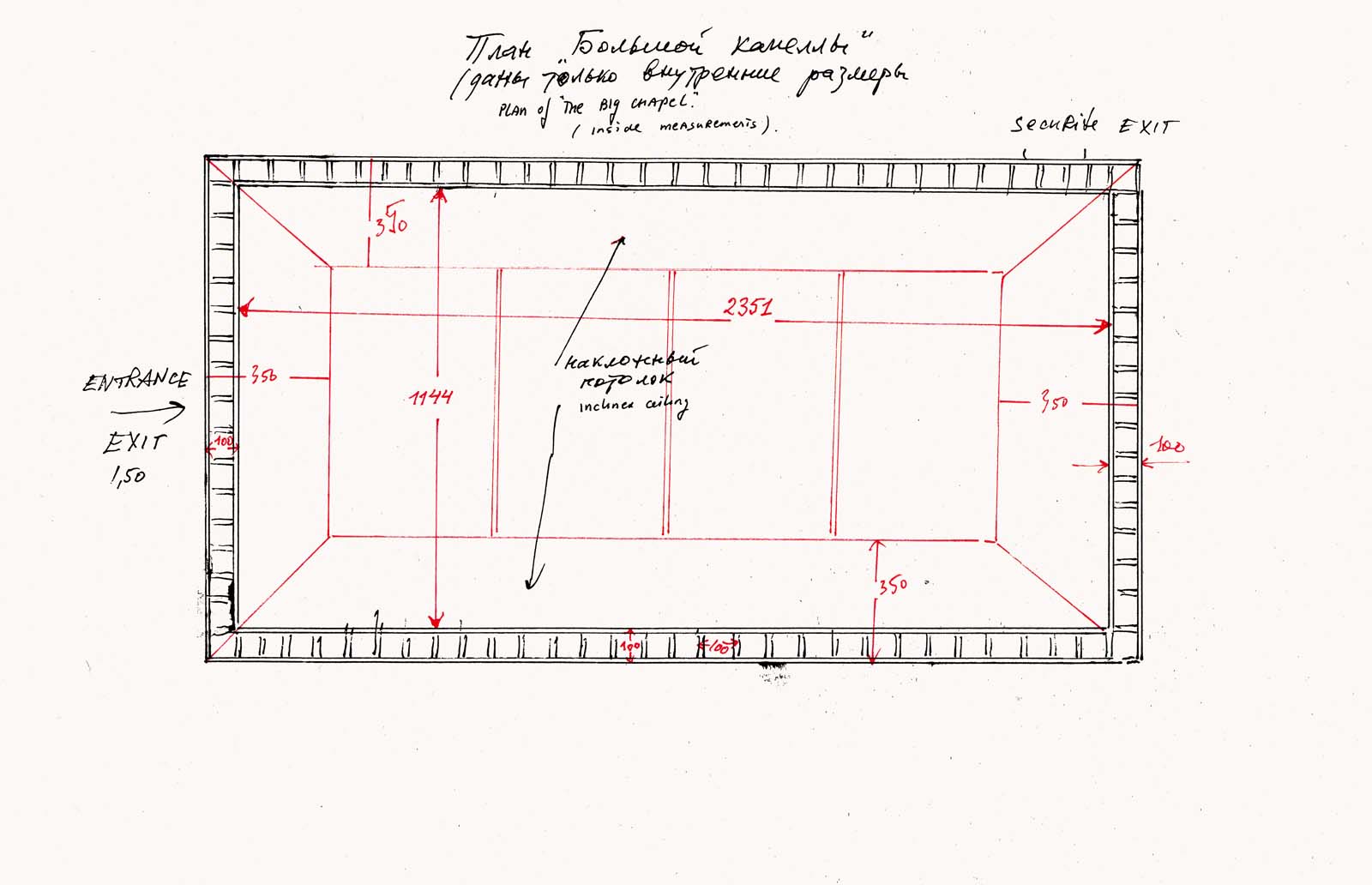The White Chapel
with Emilia Kabakov
YEAR: 2014
CATALOGUE NUMBER: 191
PROVENANCE
Collection of Ilya and Emilia Kabakov
NOTES:
See CRI, vol. 3, no. 193, pp. 366–387.
Consists of seventy-nine canvases connected to each other over three floors, thus forming four walls.
See CRP, vol. 2, nos. 587–614, pp. 328–355.
EXHIBITIONS
Grand Palais, Paris, France
Ilya et Emilia Kabakov: L’Etrange Cité (Ilya and Emilia Kabakov: The Strange City), Monumenta 2014, organization: Réunion des musées nationaux with support of the Ministry of Culture and Communication, May 10 to June 22, 2014
DESCRIPTION
The chapel consists of 79 canvases that abut one another tightly and that are arranged in three rows, one above the other. Together they form all four walls from floor to ceiling.
CONCEPT OF THE INSTALLATION
“The White Chapel” was built as a juxtaposition to “The Dark Chapel”. It may be erected not next to it, but entirely apart from it. Upon entering, the overall impression is that the four walls are entirely white, and scattered haphazardly all over them are square fragments depicting pieces of a painting of some sort of actual “reality.” The mention of a “painting” is not a misstatement. These “fragments” scattered across the four walls could be understood by the viewer to be a large integrated painting with a clear content that has been cut up into little squares, and the viewer is faced with the task of reassembling these pieces into a single unified “puzzle.” But a different, no less possible interpretation may also enter one’s imagination. The entire space of the chapel may be understood as the image of the disappearing memory of the past, where what remains in one’s consciousness are merely small fragments of that past, only small parts of remembrances, images with no connection to one another. If you scrutinize the white walls attentively, then you can see that they are all outlined vertically and horizontally with fine black lines. This leads to yet another association in one’s imagination—comparison with a ruined computer with random images emerging inside of these haphazard cells.
Why, then, can this white hall be called a “chapel”? The similarity is in the proportions of the walls, ceiling and floor. The entrance is in the center of one of the low walls, and ultimately, this large “dark” spot in the middle of the “entrance” wall replicates the place where “hell” was depicted in traditional Catholic chapels, hence the name of this space.
Images
Literature












